ÇAĞRI SARAY & DERYA YÜCEL
June 2015, Istanbul
Çağrı Saray’s solo exhibition titled “Diminishing Time” at the Galata Primary School was on show from April 3 through April 30. The exhibition was realized without the help of a gallery or a curatorial presentation. It was executed with a manner distant from the typical, sterile exhibitions and venues; it provided an alternative that hasn't been on demand recently. The show caught a lot of attention as it provided an insight into the artist's deep and intense practice. The critic and curator Derya Yücel, a member of AICA -TR, interviewed Saray about his practice and the exhibition covering 15 years of his career.
Derya Yücel: You are an artist that builds his works on concepts such as memory, history, location. We might begin with a prevailing sense that is revealed in the exhibition that covers almost fifteen years of your production. And this sense is that your works function as a personal journal that keeps records of our social memory. So, you have managed to create a memory that carries a thin layer of itself within the exhibition space and while doing that, the setting of the show also keeps an appropriate distance from it. It's loaded, intense and at the same time, a modest exhibition. Especially in a time when there seem to have no possibility of presentation without the support of a gallery, sponsor and curator.
Çağrı Saray: The developing market “rules” of the past 10-15 years of the art scene in Istanbul shaped its own organizations, actors and trends. While there were alternative options, venues, initiatives and networks at the beginning of 2000s, recently it seems to evolve into a much more commercial form. We also faced with the fact of losing the alternative art spaces with the help of urban renewal politics and gentrification processes. Yes, to exist, without a mediator, and continuing to produce more art needs a lot of effort and resistance. And to stay out of these art world rules, though it seems harder than ever, is not impossible. It was not an easy and comfortable period but I think this situation is the exhibition's strongest part. That is, its very existence without a sponsor, organization or curator.
Derya Yücel: Can you tell us about how you prepared the exhibition? Was it a significant element for you to consider the Galata Greek Primary School's architectural structure, spatial memory or position? Because the place has this effect of creating a meaningful shell around itself. Maybe, I think, that might be the source of the balanced dialogue that one feels between the works and the venue.
Çağrı Saray: “Diminishing Time” was an exhibition project that I've been thinking about for the last two years. I needed a place with a large space because of the context of the show and the scale of the works. When you consider the venues that has these qualities that I mentioned, there are not many alternatives. In the end, the Galata Greek Primary School was suitable to host the exhibition because both the venue and the timetable were appropriate. It was instrumental as a space that still has functioning classrooms, desks but was without students, out of use and dysfunctionalized. In a sense, as you've mentioned, in time, the venue's physical appearance created a frozen moment for me. So it established a dialogue with the works that was not that artificial. I might also say that this dialogue strengthened with the help of the spatial preparation that I've worked on before setting the exhibition. How to position the works, how to exhibit them side by side, and which ones will create a meaning while one walks around to see the show, were the issues that I've been working on. Though I created the setting before the exhibition, founding period was still hard. But acquaintances, artist friends and my students supported me during this time. Especially for my students, the set-up period was quite useful, because they had the chance to have an experience on how to prepare a show. I might add that every step of that spatial preparation period was formed with exchanging ideas, suggestions and matured with dialogue.
Derya Yücel: Was that a deliberate decision or preference to have no support from a curator, in such an exhibition that is independent from an organization, general support and sponsor? Because you've been inside the art scene, your practice is familiar for quite a long time now, and there are curators that you have worked with before, from the same generation that share the same views and perspectives parallel to yours. Have you kept your distance deliberately from such a partnership?
Çağrı Saray: For this exhibition, yes, I deliberately kept my distance. In an exhibition such as this one, the idea of being on my own felt more appropriate, especially in a show that has so many works covering such a long time – the idea of being alone made me feel better. I also had the experience as an artist on how to form an exhibition, since the early 2000s, creating works for exhibitions or being involved in those exhibitions that has no support from organizations. I adopted this idea to make a new beginning maybe, or for the chance to face directly the works I created for quite some time ago.
Derya Yücel: I want to talk about the works in the exhibition through that balanced dialogue created with space and works. For me, even though you have no site-specific production, the dialogue you managed to catch with this space, especially when you consider the chronicle variety of works, stems from a coherence of context. And this is mostly about creating a complete story that references to personal memory, a personal journal, social memorabilia that are sometimes distant, sometimes surreal and poetic and more often with glimpses of familiar images. Although it is hard for us to evaluate each and every one of them here, if I count the ones that strengthened my reading of your exhibition are “Memory Boxes” that involve your drawings, the canvas paintings and 3D object installations. These were mostly about hints on memory, childhood, and everyday life. Or the “Spaces of Memory” consisting 12 pictures which are the recreated images of architectural structures related with our close history, social memory; and “4/12 A Topography of A Home” representing an identity and belonging... etc.
Çağrı Saray: Even though they seem to be produced with different media, in my own practice, the concepts that I'm working on such as memory, identity, personal and social histories and the intersecting spaces they create constitute a main structure that binds them together. Accordingly, when looking at the Galata Greek Primary School, all these concepts are the codes describing this very institution. In some of these rooms I used the objects such as desks and little student stools that has meaningful connections and support with my works. In a way, while we were founding this exhibition, some connections were born naturally. Above all else, “Diminishing Time”, as a wide solo exhibition, gave me the chance to face my own practice at an appropriate place and time, and presented the opportunity to put forward my thinking and working methods that cover a very long time.
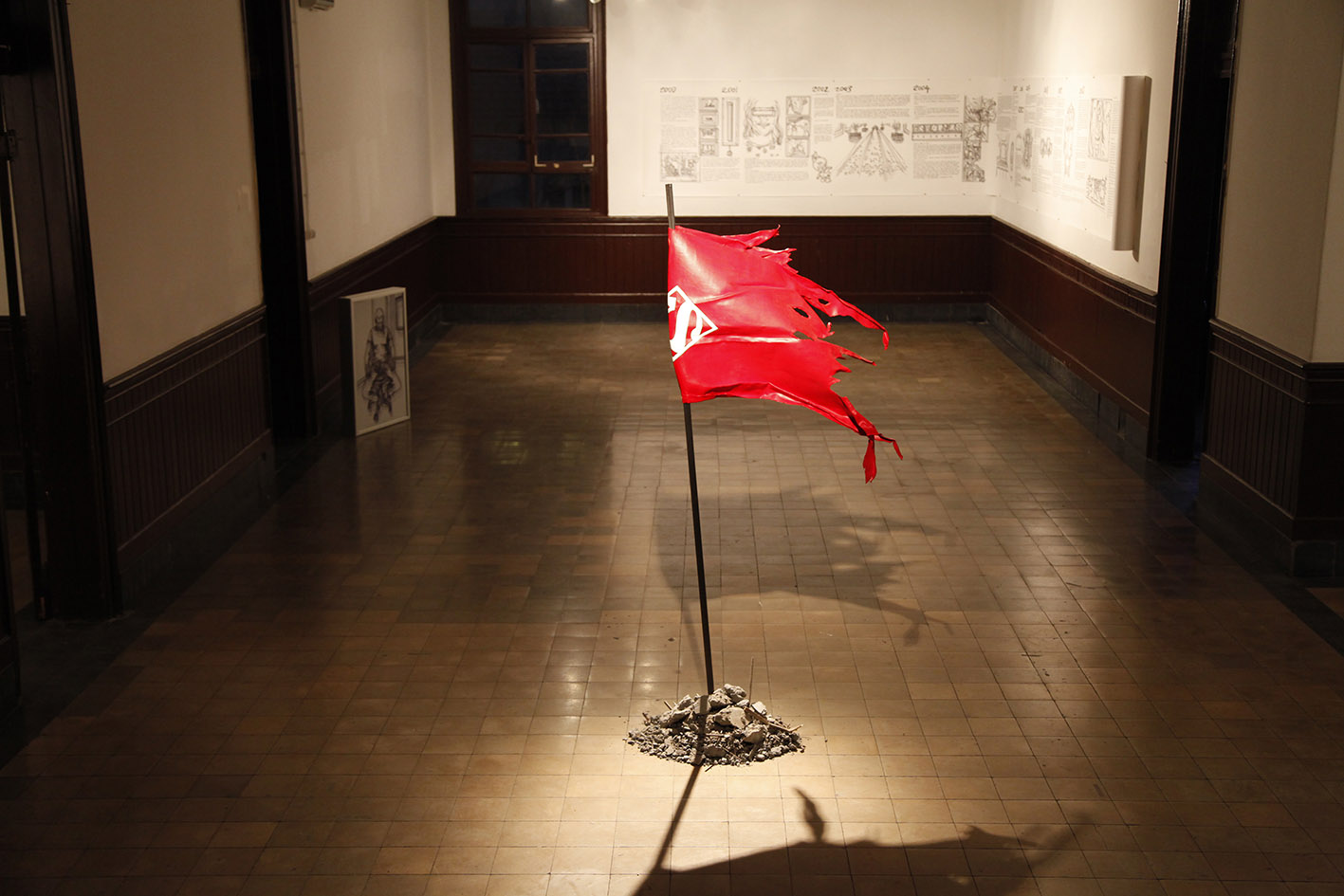
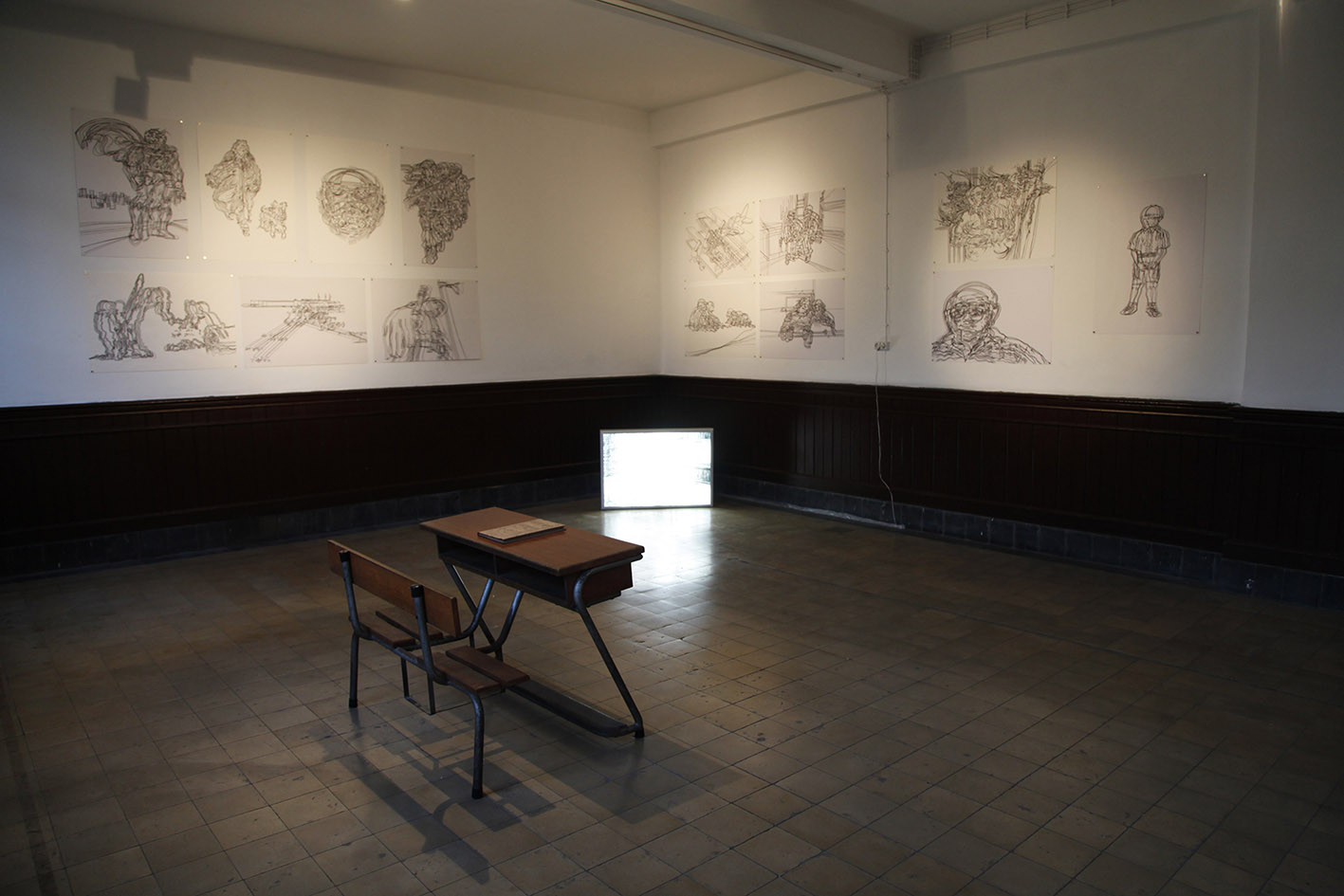
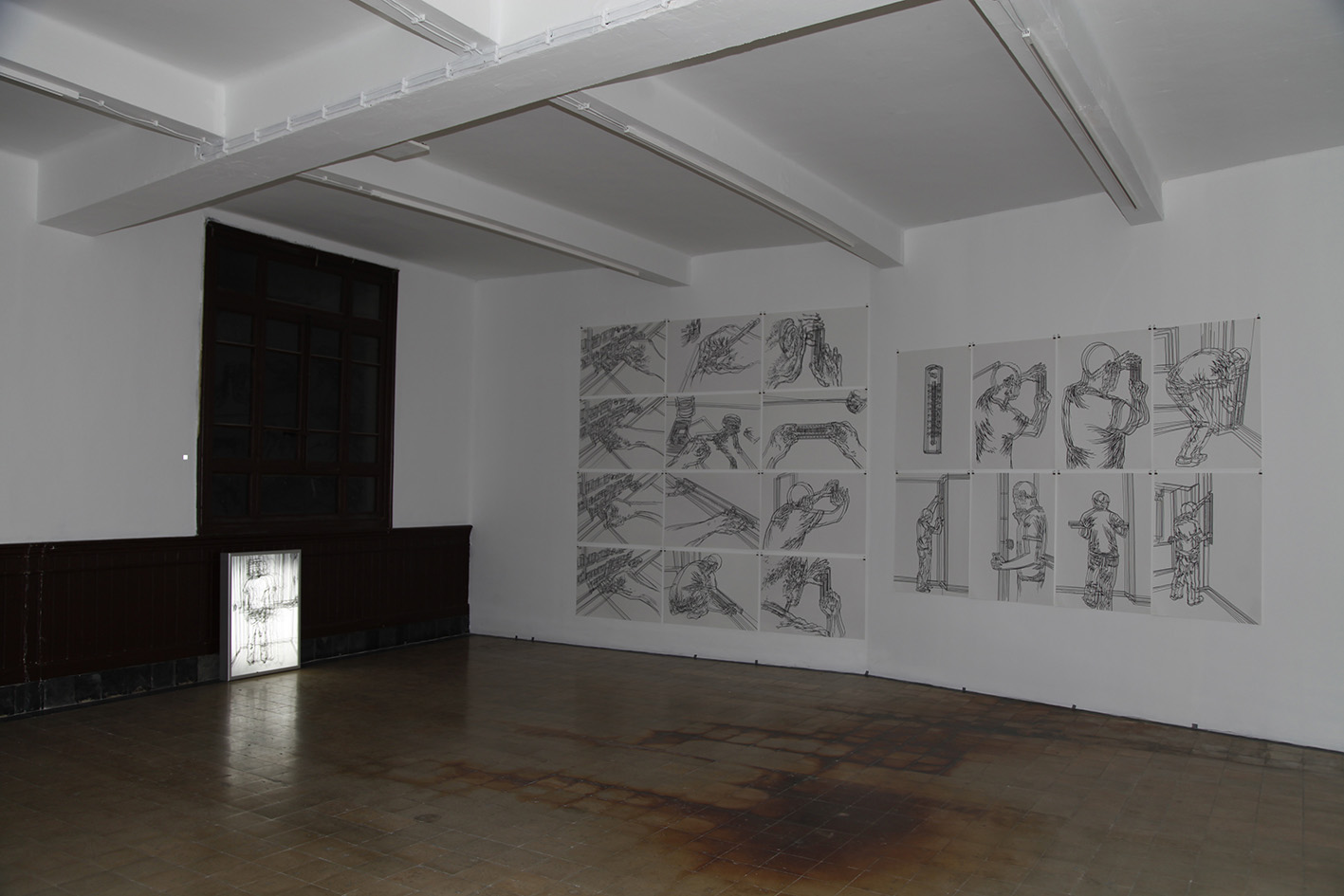
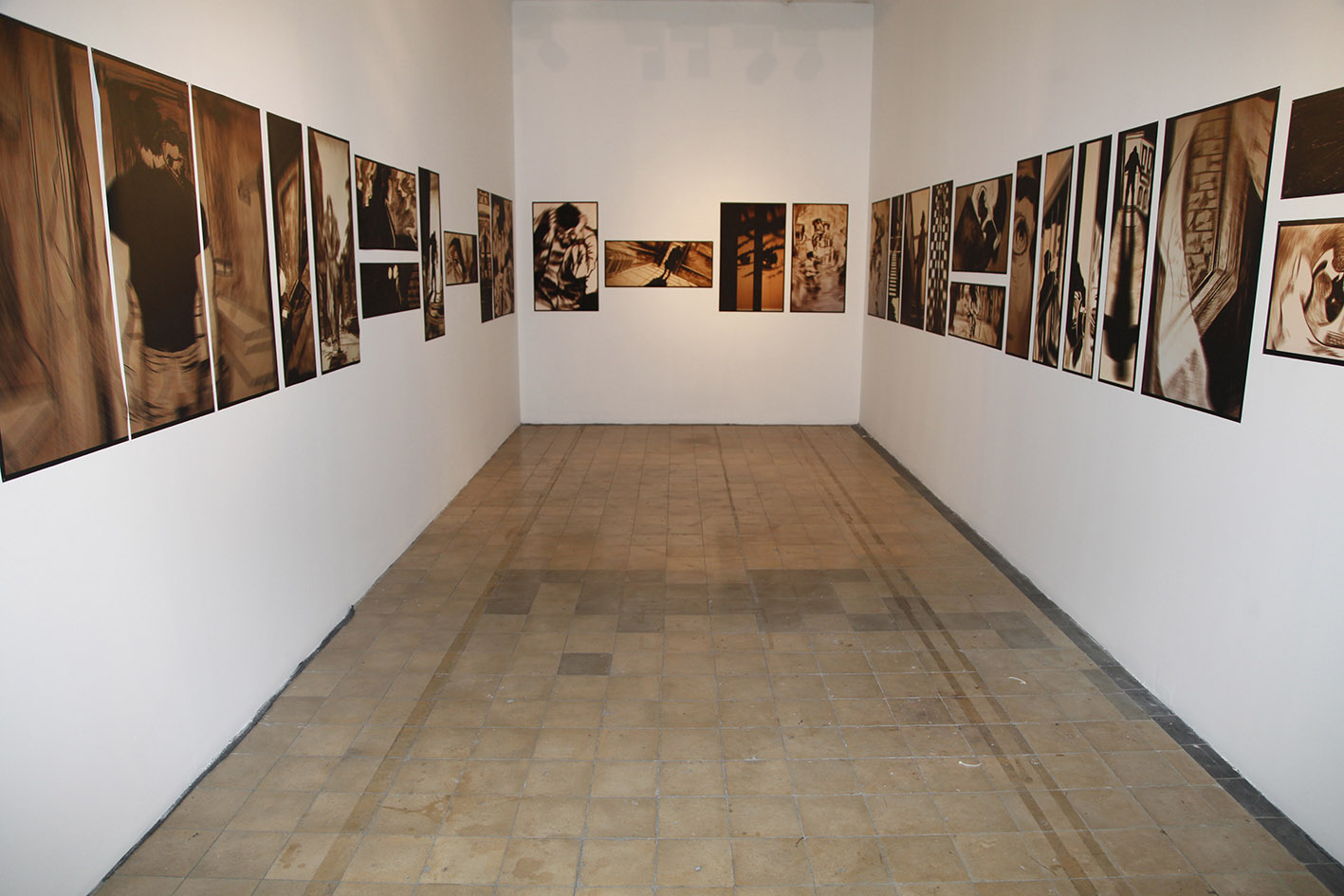
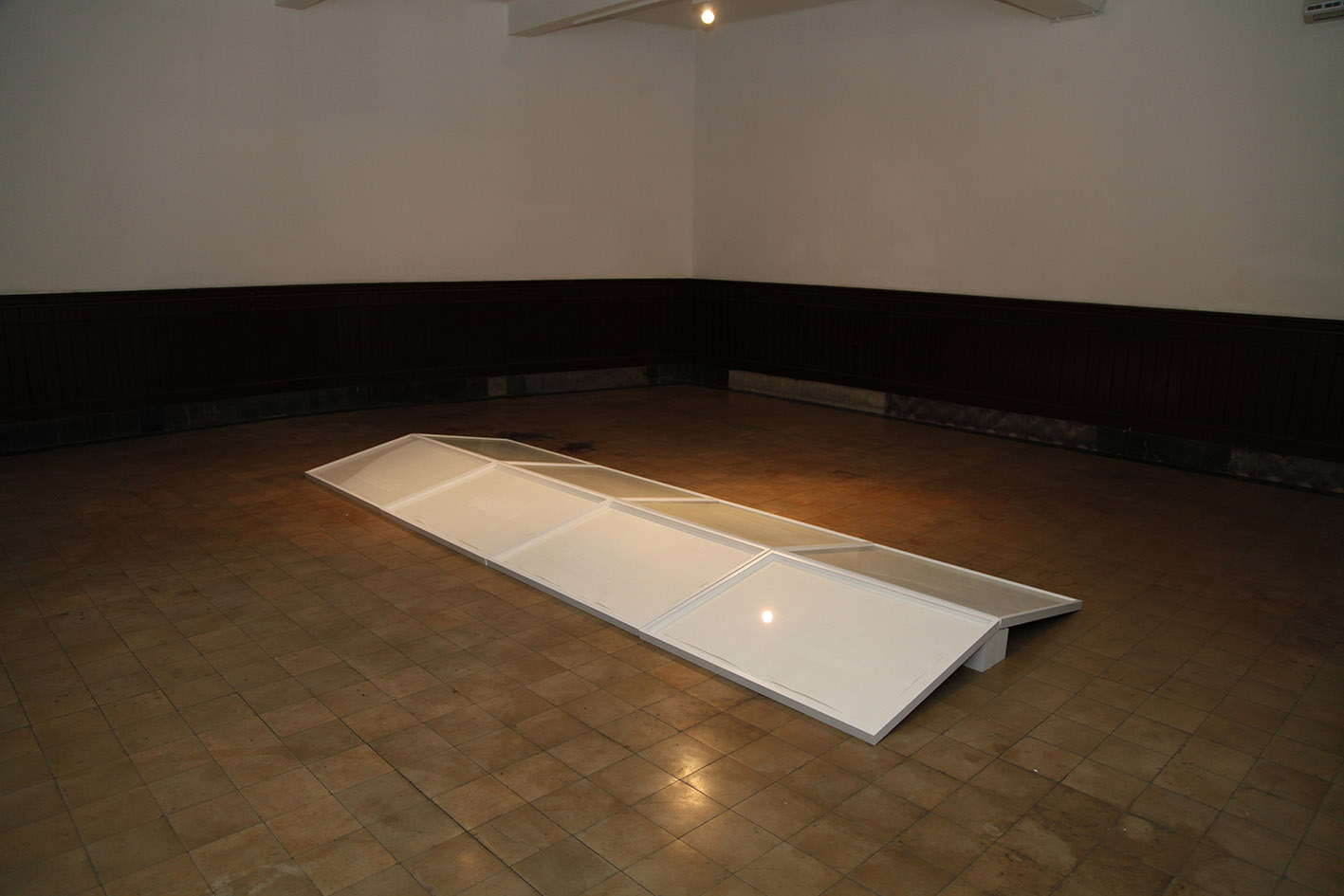

June 2015, Istanbul
Çağrı Saray’s solo exhibition titled “Diminishing Time” at the Galata Primary School was on show from April 3 through April 30. The exhibition was realized without the help of a gallery or a curatorial presentation. It was executed with a manner distant from the typical, sterile exhibitions and venues; it provided an alternative that hasn't been on demand recently. The show caught a lot of attention as it provided an insight into the artist's deep and intense practice. The critic and curator Derya Yücel, a member of AICA -TR, interviewed Saray about his practice and the exhibition covering 15 years of his career.
Derya Yücel: You are an artist that builds his works on concepts such as memory, history, location. We might begin with a prevailing sense that is revealed in the exhibition that covers almost fifteen years of your production. And this sense is that your works function as a personal journal that keeps records of our social memory. So, you have managed to create a memory that carries a thin layer of itself within the exhibition space and while doing that, the setting of the show also keeps an appropriate distance from it. It's loaded, intense and at the same time, a modest exhibition. Especially in a time when there seem to have no possibility of presentation without the support of a gallery, sponsor and curator.
Çağrı Saray: The developing market “rules” of the past 10-15 years of the art scene in Istanbul shaped its own organizations, actors and trends. While there were alternative options, venues, initiatives and networks at the beginning of 2000s, recently it seems to evolve into a much more commercial form. We also faced with the fact of losing the alternative art spaces with the help of urban renewal politics and gentrification processes. Yes, to exist, without a mediator, and continuing to produce more art needs a lot of effort and resistance. And to stay out of these art world rules, though it seems harder than ever, is not impossible. It was not an easy and comfortable period but I think this situation is the exhibition's strongest part. That is, its very existence without a sponsor, organization or curator.
Derya Yücel: Can you tell us about how you prepared the exhibition? Was it a significant element for you to consider the Galata Greek Primary School's architectural structure, spatial memory or position? Because the place has this effect of creating a meaningful shell around itself. Maybe, I think, that might be the source of the balanced dialogue that one feels between the works and the venue.
Çağrı Saray: “Diminishing Time” was an exhibition project that I've been thinking about for the last two years. I needed a place with a large space because of the context of the show and the scale of the works. When you consider the venues that has these qualities that I mentioned, there are not many alternatives. In the end, the Galata Greek Primary School was suitable to host the exhibition because both the venue and the timetable were appropriate. It was instrumental as a space that still has functioning classrooms, desks but was without students, out of use and dysfunctionalized. In a sense, as you've mentioned, in time, the venue's physical appearance created a frozen moment for me. So it established a dialogue with the works that was not that artificial. I might also say that this dialogue strengthened with the help of the spatial preparation that I've worked on before setting the exhibition. How to position the works, how to exhibit them side by side, and which ones will create a meaning while one walks around to see the show, were the issues that I've been working on. Though I created the setting before the exhibition, founding period was still hard. But acquaintances, artist friends and my students supported me during this time. Especially for my students, the set-up period was quite useful, because they had the chance to have an experience on how to prepare a show. I might add that every step of that spatial preparation period was formed with exchanging ideas, suggestions and matured with dialogue.
Derya Yücel: Was that a deliberate decision or preference to have no support from a curator, in such an exhibition that is independent from an organization, general support and sponsor? Because you've been inside the art scene, your practice is familiar for quite a long time now, and there are curators that you have worked with before, from the same generation that share the same views and perspectives parallel to yours. Have you kept your distance deliberately from such a partnership?
Çağrı Saray: For this exhibition, yes, I deliberately kept my distance. In an exhibition such as this one, the idea of being on my own felt more appropriate, especially in a show that has so many works covering such a long time – the idea of being alone made me feel better. I also had the experience as an artist on how to form an exhibition, since the early 2000s, creating works for exhibitions or being involved in those exhibitions that has no support from organizations. I adopted this idea to make a new beginning maybe, or for the chance to face directly the works I created for quite some time ago.
Derya Yücel: I want to talk about the works in the exhibition through that balanced dialogue created with space and works. For me, even though you have no site-specific production, the dialogue you managed to catch with this space, especially when you consider the chronicle variety of works, stems from a coherence of context. And this is mostly about creating a complete story that references to personal memory, a personal journal, social memorabilia that are sometimes distant, sometimes surreal and poetic and more often with glimpses of familiar images. Although it is hard for us to evaluate each and every one of them here, if I count the ones that strengthened my reading of your exhibition are “Memory Boxes” that involve your drawings, the canvas paintings and 3D object installations. These were mostly about hints on memory, childhood, and everyday life. Or the “Spaces of Memory” consisting 12 pictures which are the recreated images of architectural structures related with our close history, social memory; and “4/12 A Topography of A Home” representing an identity and belonging... etc.
Çağrı Saray: Even though they seem to be produced with different media, in my own practice, the concepts that I'm working on such as memory, identity, personal and social histories and the intersecting spaces they create constitute a main structure that binds them together. Accordingly, when looking at the Galata Greek Primary School, all these concepts are the codes describing this very institution. In some of these rooms I used the objects such as desks and little student stools that has meaningful connections and support with my works. In a way, while we were founding this exhibition, some connections were born naturally. Above all else, “Diminishing Time”, as a wide solo exhibition, gave me the chance to face my own practice at an appropriate place and time, and presented the opportunity to put forward my thinking and working methods that cover a very long time.





